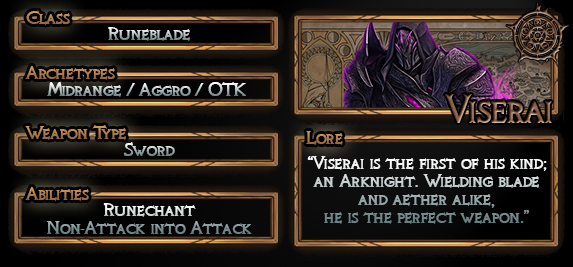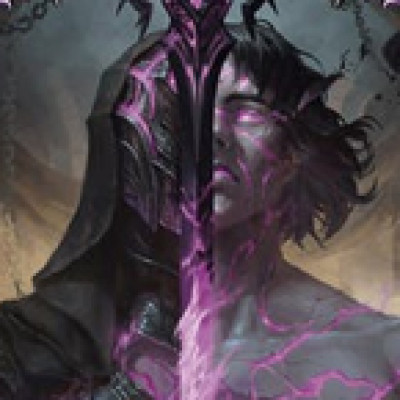If you're reading this, then you, too, have succumbed to the temptation of the power held within the Demonastery. For those willing to delve deeply and invest the time to learn, Runeblade can be a complex and rewarding class to bring to tournaments of any size.
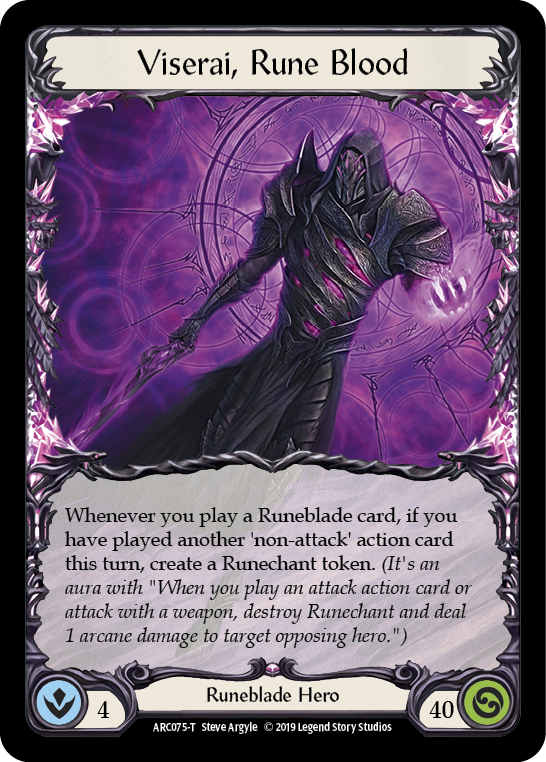
Viserai, Rune Blood is Flesh and Blood's original Runeblade. Once a powerful martial warrior in his own right, Viserai was imbued with the power of the Arknight Shard, allowing him to augment his physical abilities with arcane power.
Status Update: Young Viserai has achieved Living Legend status in Blitz! This means he cannot be played in the standard Blitz format any longer. He took the Nebula Blade, his signature weapon, along with him.
Viserai, Rune Blood remains an option in Classic Constructed, and Young Viserai can be played in less conventional formats such as Commoner and Ultimate Pit Fight, but for Blitz you'll need to get your Runeblade fix through Chane or Briar.
Viserai's Competitive Legacy
Viserai was released in Arcane Rising, and despite being a powerhouse in limited formats, his potential in constructed formats went largely untapped until Crucible of War. The inaugural Skirmish season initially saw OTK (One Turn Kill) Viserai rise to some prominence as a counter to the consistent and aggressive Ira and Dorinthea decks that topped the meta, but towards the end of the season it was Midrange Viserai making some waves in the Blitz metagame off the power of Sloggism, Arknight Ascendancy, and Rattle Bones.
Monarch introduced Chane, Bound by Shadow, and the Shadow Runeblade proceeded to dominate the Classic Constructed meta throughout the 2021 Road to Nationals season. Meanwhile, Viserai quietly got one of his most important cards in the form of Sonata Arcanix, which revolutionized the way Midrange Viserai decks were built. Tales of Aria gave us yet another Runeblade in the form of Briar, Warden of Thorns, and the Elemental Runeblade wasted little time becoming the predominant aggro deck in the meta during the 2021 Nationals events, though this time Viserai had something to say about it. Rosetta Thorn and Spellbound Creepers were huge gains for Viserai, and a hybrid Midrange/OTK list piloted to a Top 8 finish by Matt Rogers at The Calling: Orlando became the new standard. This hybrid style utilized a transformational sideboard plan that allowed it to play aggressively against decks it could outrace, dedicated OTK against control decks, and defensive OTK against aggressive decks it couldn't outrace, and it earned Viserai his first major tournament win in the hands of Hayden Dale at Australian Nationals.
Everfest brought Viserai some powerful cards in the form of Swarming Gloomveil, Revel in Runeblood, and Vexing Quillhand, pushing aggressive builds of Viserai enough that the OTK gameplan became a tool generally reserved for opponents playing control decks. In the end, it turned out that the offensive power of Bloodsheath Skeleta was too much for too many decks to handle, leading to it being suspended in CC until Viserai becomes Living Legend, and to Viserai becoming the first Living Legend in Blitz.
The Essence of Runeblade
Runeblade remains the true hybrid-damage class, capable of dealing both arcane and normal damage. While Chane and Briar lend themselves most effectively to aggressive strategies, Viserai sets the pace for being the most versatile of the Runeblades, capable of fielding respectable Aggro, Midrange, and Combo/OTK builds. The combination of sword and sorcery is represented on Runeblade cards in a number of ways, with the most common theme being combining non-attack actions and attack actions in such a way to allow for turns above the normal power curve. For Viserai specifically, it is also represented in the form of Runechant tokens.
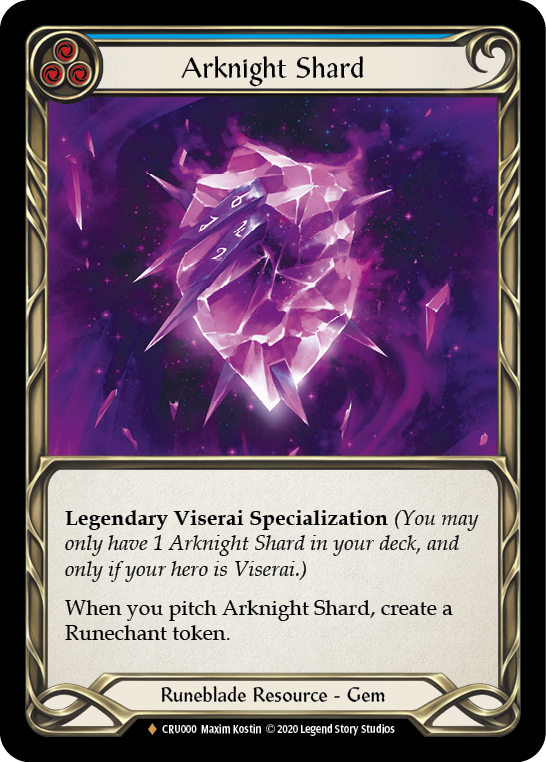
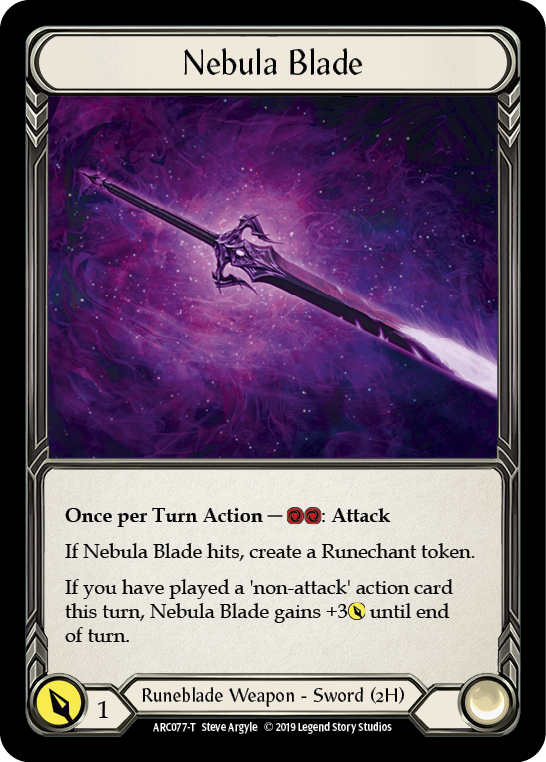
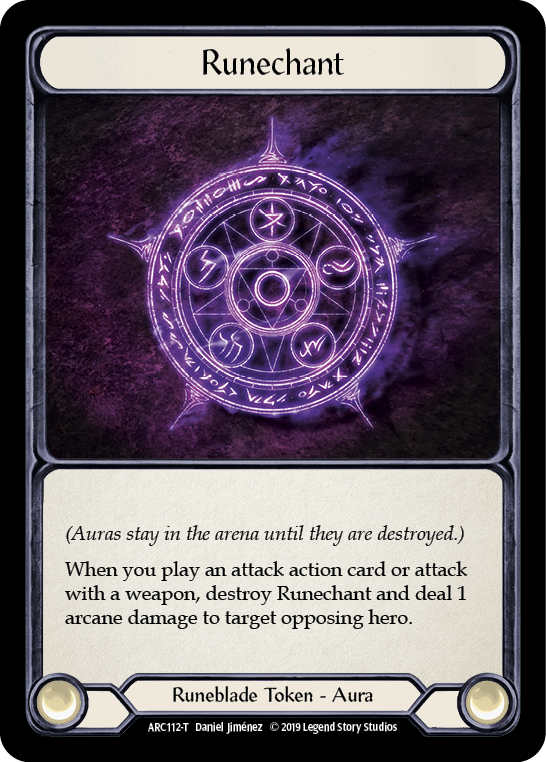
As a Runeblade player, Runechants do a number of things for us besides hitting our opponents for extra damage when we attack. Most Runeblade cards (and all Runeblade Attack Actions) involve Runechants or arcane damage in some way. Some cards have their cost discounted, others create new Runechants when an attack action hits, and some just give you Runechants no matter what.
Rules Tip: When you attack and cause Runechants to trigger, each Runechant becomes a layer on the chain and will resolve before you move to the Defend Step.
Runechants are Viserai's core mechanic, and they do a number of things for us besides hitting our opponents for extra damage when we attack. Many Runeblade cards involve Runechants or arcane damage in some way. Some cards have their cost discounted, some create new Runechants when you attack or hit, some reward you for having dealt arcane damage, some key off of generating them (Runechants are auras), and others just have arcane damage stapled onto them.
The Runeblade Tax
From the beginning of the game when players select their equipment, opponents will know that they'll need at least one instance of Arcane Barrier 1 in order to reasonably repel our onslaught of arcane damage. While the four Arcane Rising classes each have a piece of class equipment with Arcane Barrier 1, it's less common or absent among many other classes. (And then there's the efficiency issue: Brute, for example, has Arcane Barrier 2, which isn't as effective against Runeblade- more on that later.)
This "Runeblade tax" on our opponents takes a very real toll on their ability to block our physical damage. Warrior players against other purely martial classes would probably run an equipment setup consisting of Arcanite Skullcap, Courage of Bravehold, Braveforge Bracers, and Refraction Bolters.
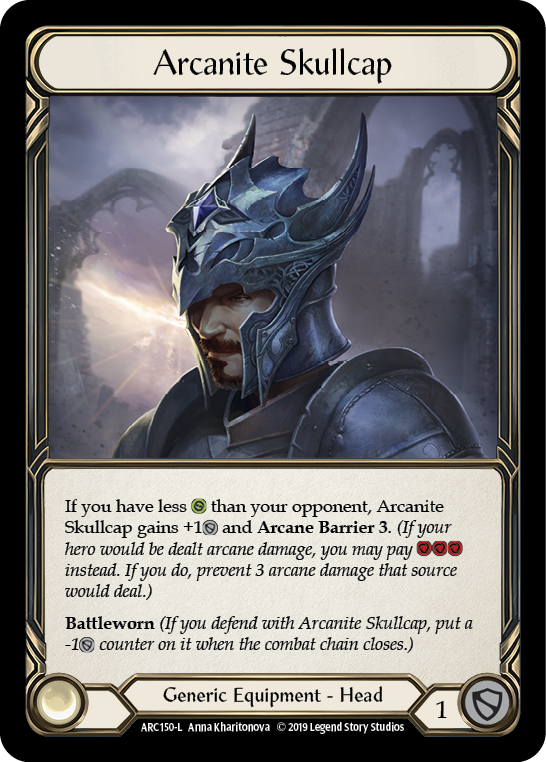
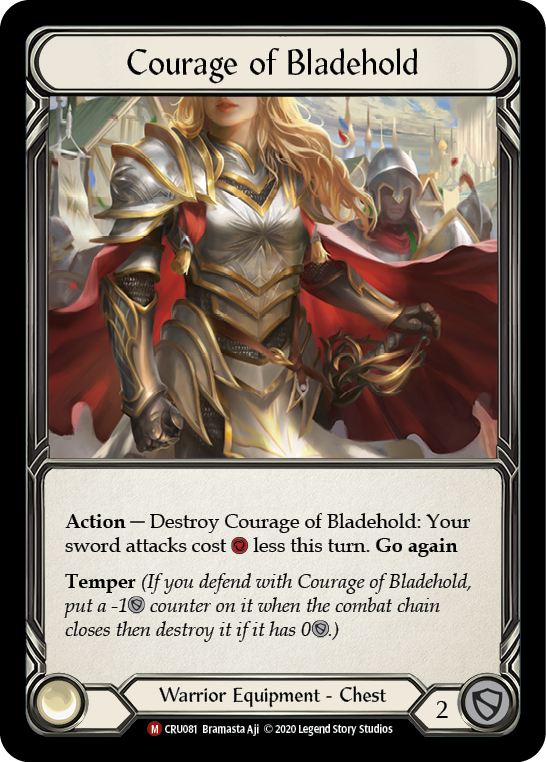
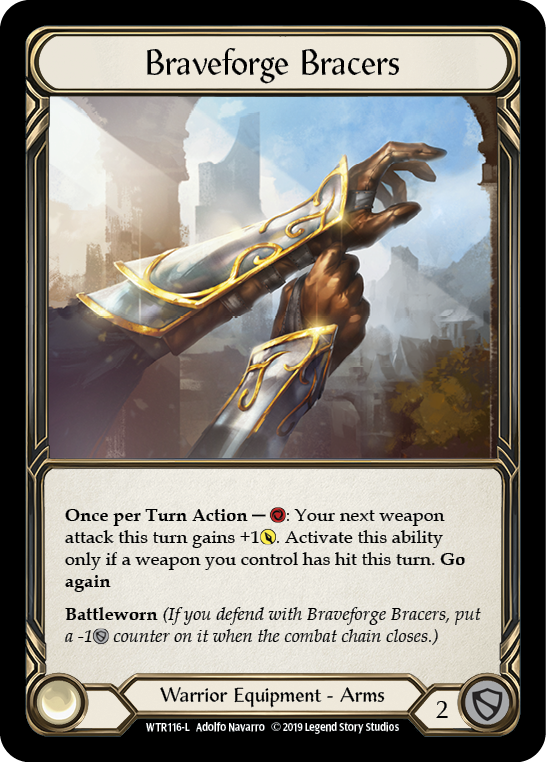
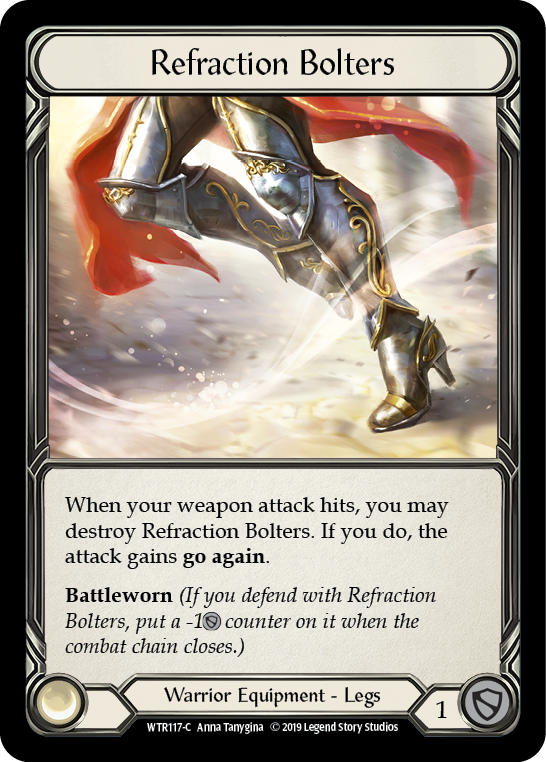
This equipment represents 10 defense over the course of a game. From my own playing experience, Warrior opponents will generally choose Arcanite Skullcap as the cut for a Nullrune Hood. So just by virtue of the class we're playing, we have deprived them of 3 defense that would have been very helpful in stopping some of our powerful Runeblade attacks and on-hit effects.
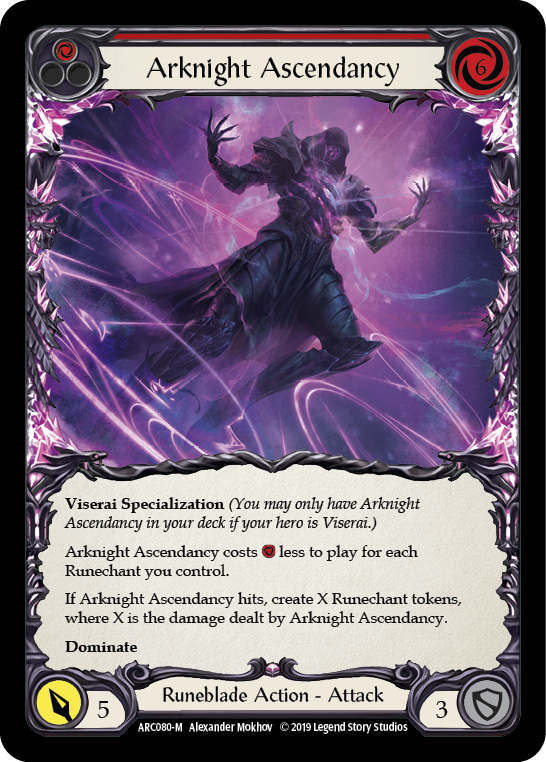
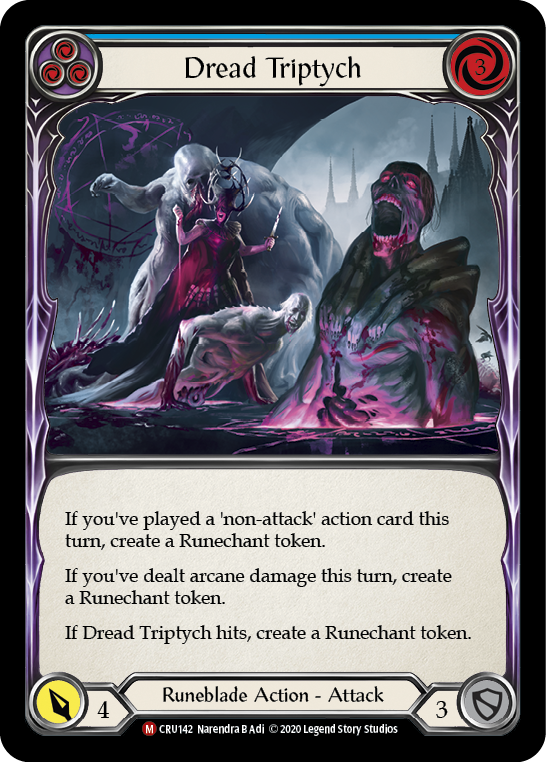
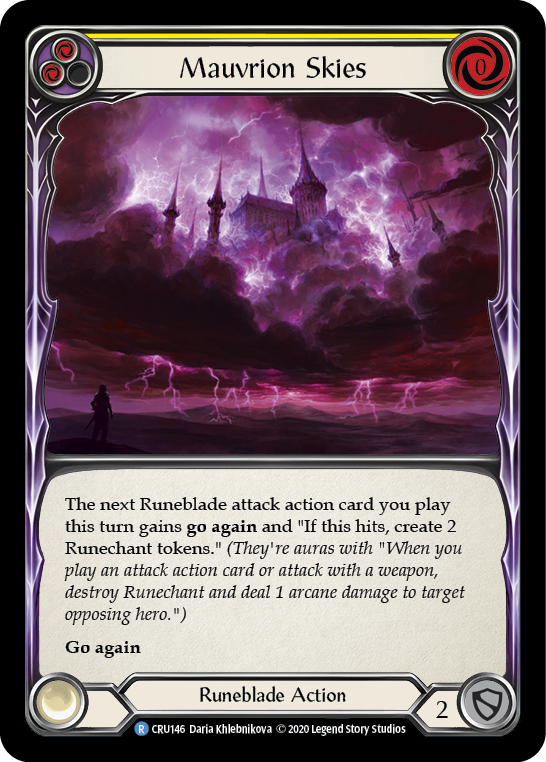
Why wasn't the Arcanite Skullcap's Arcane Barrier 3 sufficient? It's because of how Arcane Barrier works, and because of how Runechants work. "Arcane Barrier X" requires you to pitch equal to X to prevent X arcane damage from a source. But Runechants are each a separate instance of arcane damage. This makes Arcane Barrier 2+ inefficient, as you'll have to pitch 2 for every Runechant individually. It also allows Arcane Barrier 1 to completely suffice- you can pitch X resources to cover X instances of 1 arcane damage.
Damage on Two Fronts
Ignoring the synergies with our other cards for a moment, Runechants represent a separate source of damage whenever we attack our opponents. From a purely damage dealing perspective, this is advantageous due to it forcing our opponents to split their defensive efforts between the two damage types. This effect is easy to overlook initially, but it’s nearly the equivalent of having go again and a second attack action stapled onto our attacks.
Additionally, our arcane damage adds a new defensive angle that our opponents must consider, which is pitch value. It's not uncommon for Ninja or Warrior players to block aggressively with a red heavy hand, comfortable in the knowledge that the single blue they're holding should be able to fuel their entire next turn. But what happens when we're attacking with 6 Runechants? Not only do they still potentially need to block the normal damage we're sending at them, but against our Runechants there is only a single block 3 in their hand. They now need to weigh the cost of taking a bigger chunk of damage now versus the quality of their following turn.
Make Runechants, Reduce Costs, ..., Profit
Many Runeblade attack actions are overcosted relative to other classes' attacks with similar power. Just compare Viserai's cards to Rhinar's:
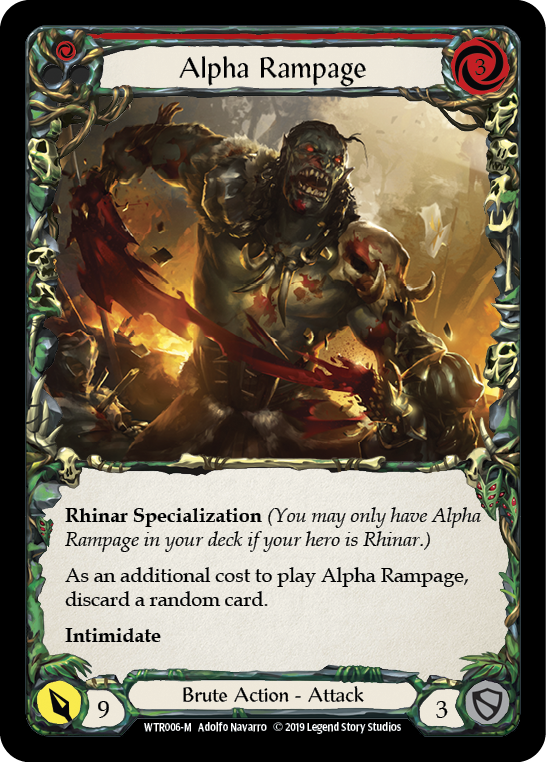
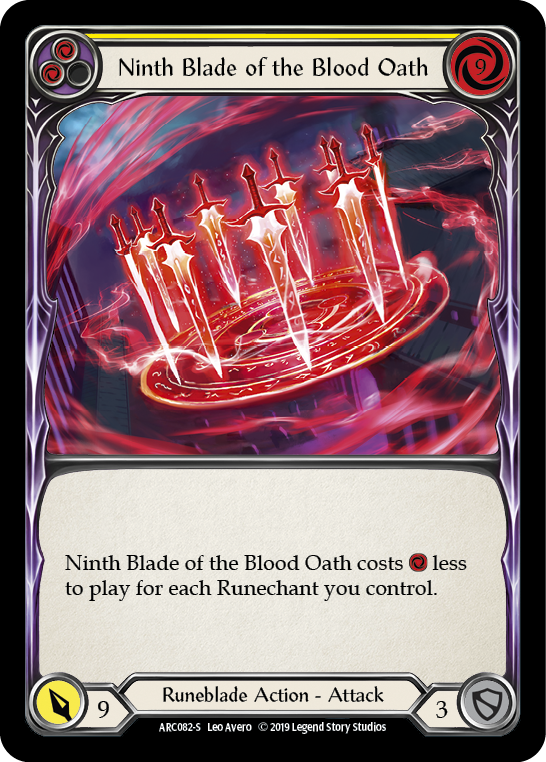
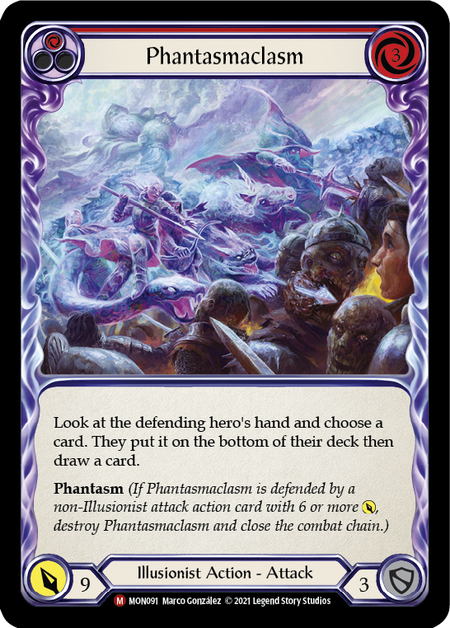
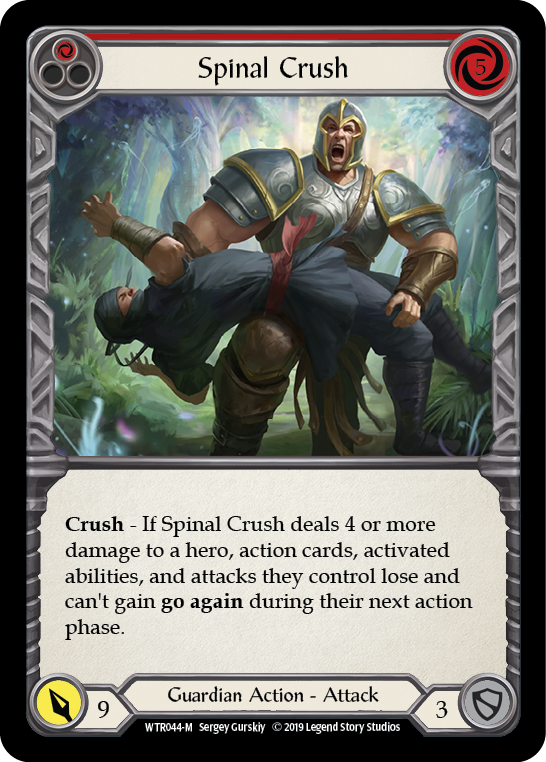
But Ninth Blade of the Blood Oath isn't just a plain 9 power attack for 9, and therein lies its power. Many Runeblade cards receive discounts to their cost based on the number of Runechants we have built up.
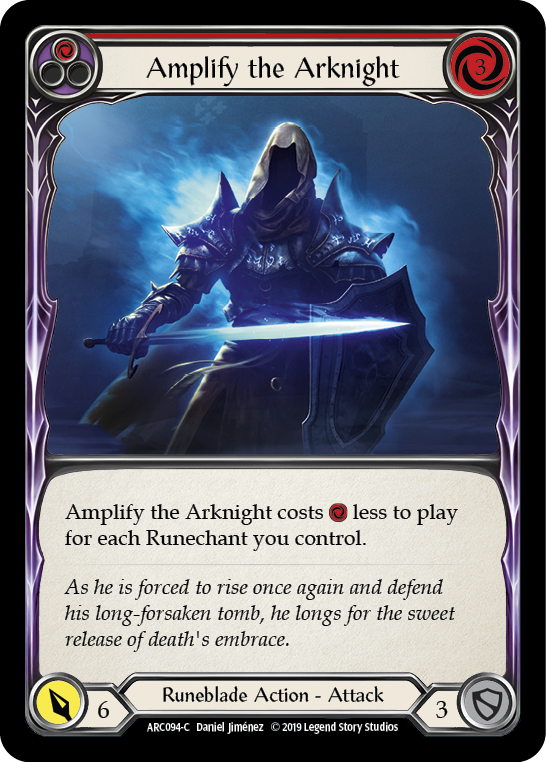
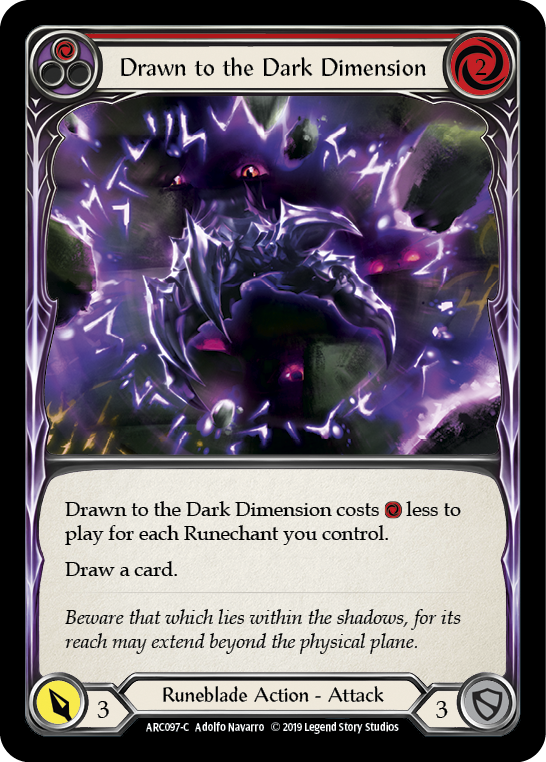
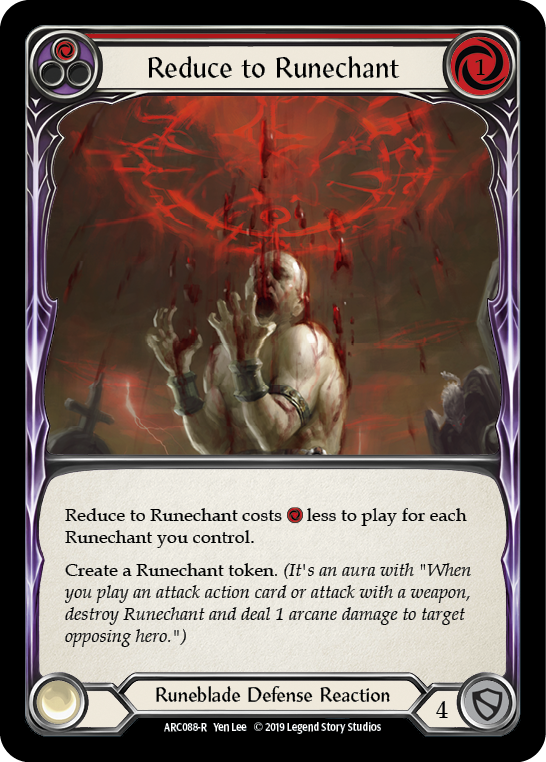
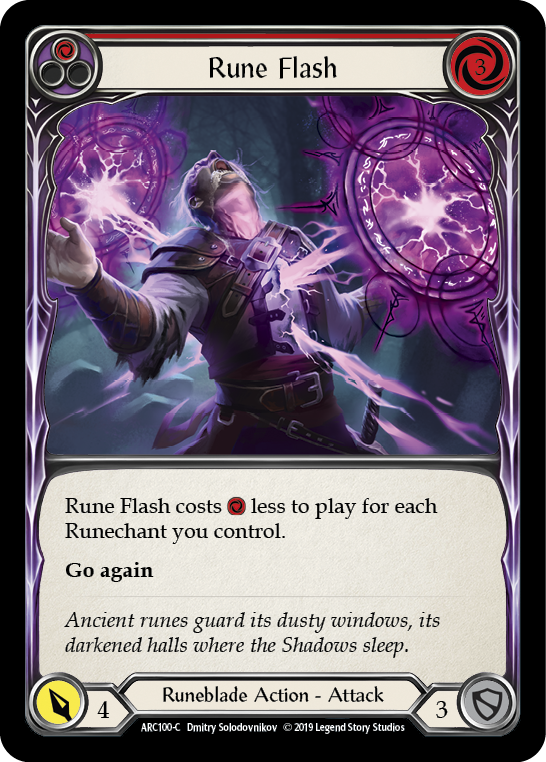
Rules Tip: Costs are calculated before discounts, so even if an effect would make your card cost more, it could still be free if you have enough Runechants.
The cost reduction of Runeblade attacks makes for some very scary turns for our opponents. Attacking with cards like Arknight Ascendancy or Amplify the Arknight for zero cost frees us up to either block aggressively or spend our resources on damage buffs like Sloggism or Pummel.
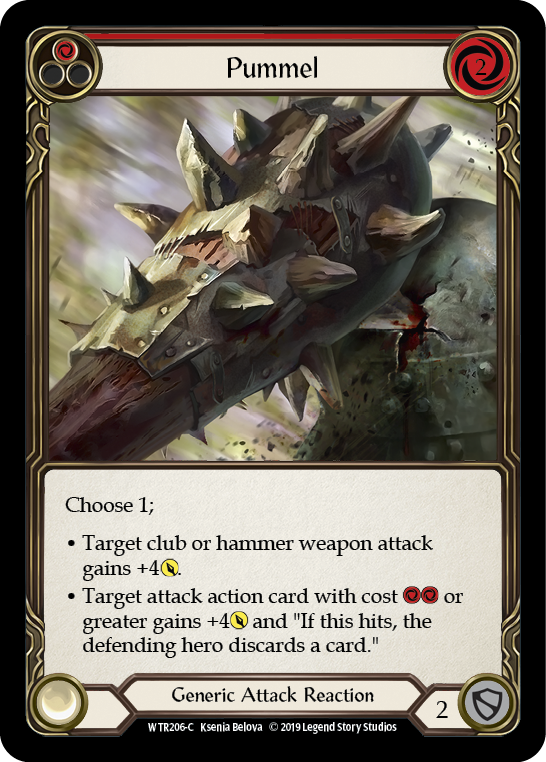
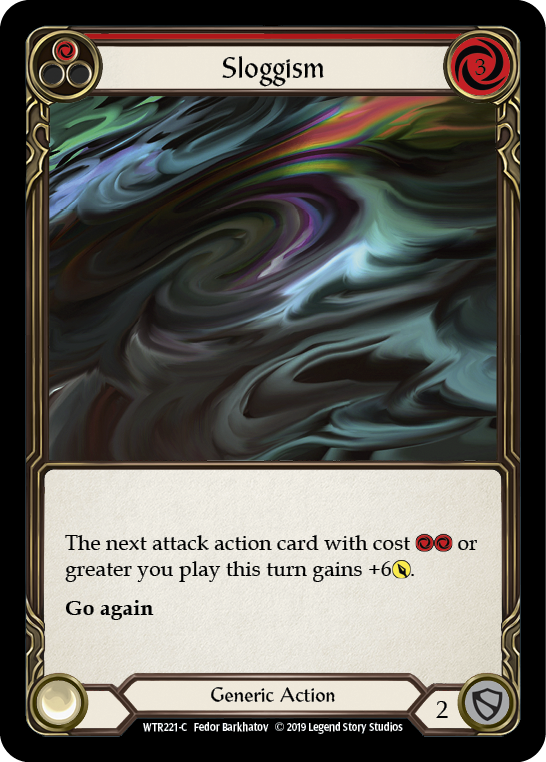
Rules Tip: The cost requirement on Sloggism and Pummel only cares about the printed cost of the card, so you can Pummel your Arknight Ascendancy even if it was free (and you should do that as often as you can manage if you like winning!)
Arguably the most potent tool in our Runeblade Discount Armory was Bloodsheath Skelata. Prior to Monarch, the most common power play with Skeleta was to break it (with at least 3 Runechants) to make a Sloggism free, and follow it up with an Arknight Ascendancy or Ninth Blade of the Blood Oath, netting anywhere from 3-7 effective resources for our trouble. Bloodsheath Skeleta's ability can be applied to non-Runeblade cards too!
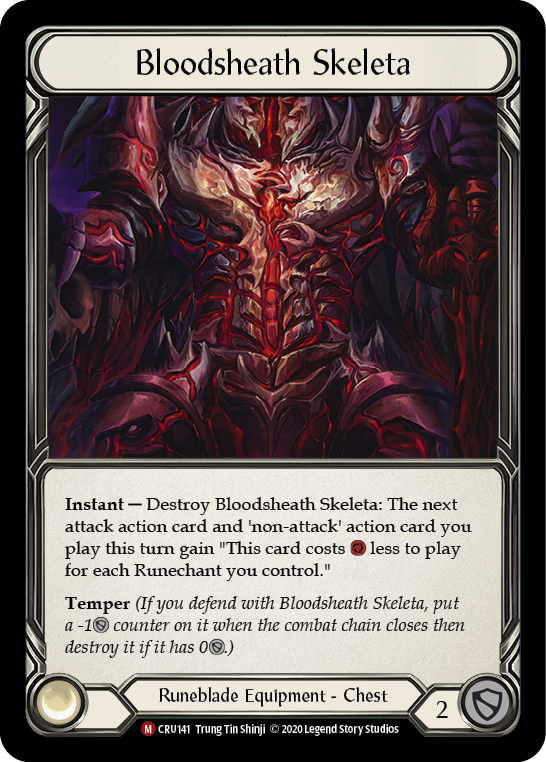
Update: Bloodsheath Skelata is currently suspended from Classic Constructed, until Viserai hits Living Legend in that format. It is legal in Blitz, but Viserai isn't- making it a footnote in the history of Viserai!
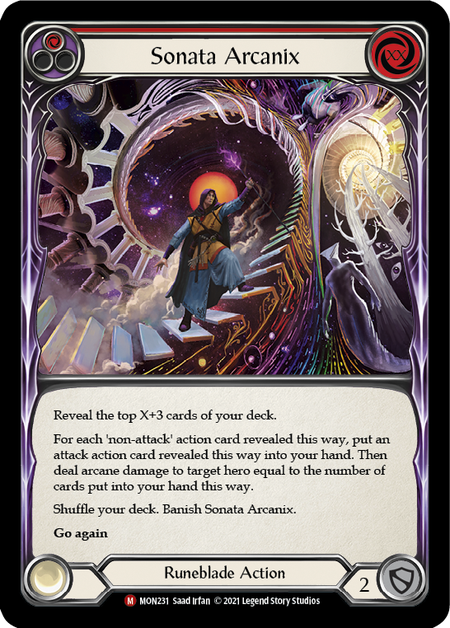
Sonata Arcanix fundamentally altered the way Viserai midrange decks were constructed. It made your attack action/non-attack action ratio matter more, made playing Arknight Shard and defense reactions a real cost, and resulted in greater emphasis on attacks with go again. With the new emphasis on big Sonata turns featuring cards like Meat and Greet, Maurvion Skies, and Enlightened Strike, something had to go; so cards aiming to go tall, such as Arknight Ascendancy and Sloggism, largely disappeared from midrange decklists.
Update: The suspension of Bloodsheath Skeleta from Classic Constructed dramatically impacted Sonata Arcanix' prominence in Viserai decks. Sonata Arcanix is also suspended from Blitz for the moment- this may be revisited around the time of Uprising's release.
Generating Runechants
Discounting our cards is obviously very powerful, but we're limited because each time we make use of our Runechants for a discounted attack, we expend all of our Runechants (no, you can't choose to save any of them for later). Ninth Blade of the Blood Oath and Arknight Ascendancy are much less impressive if you actually have to pay full cost to play it. This brings us to the all-important subject of generating Runechants.
First, let's examine Viserai's Hero ability more closely.

Whenever you play a Runeblade card, if you have played another 'non-attack' action card this turn, create a Runechant token.
Viserai's ability will trigger every time you play a Runeblade card, even if that trigger won't result in a Runechant being created. (These Runechant-less triggers are frequently handwaved or ignored as they are often irrelevant, but just know that the trigger does indeed happen every time.) In order to make the most of our Viserai triggers, what we want are proactive 'non-attack' actions with go again to "turn on" our ability. Once the 'non-attack' action criteria has been met, all subsequent Runeblade cards we play in that turn will net us a Runechant.
Runeblades have many solid options for fulfilling Step 1, such as Mordred Tide, Mauvrion Skies, Gorganian Tome, Become the Arknight, Sonata Arcanix, etc. When deckbuilding, keep in mind that the requirement of the Runeblade card type is not free. Enlightened Strike and Command and Conquer are two of the best attacks Flesh and Blood has to offer, but they tend to put a stopper on Runechant creation. (The first time you have to pitch to play a Reduce to Runechant, you'll understand)
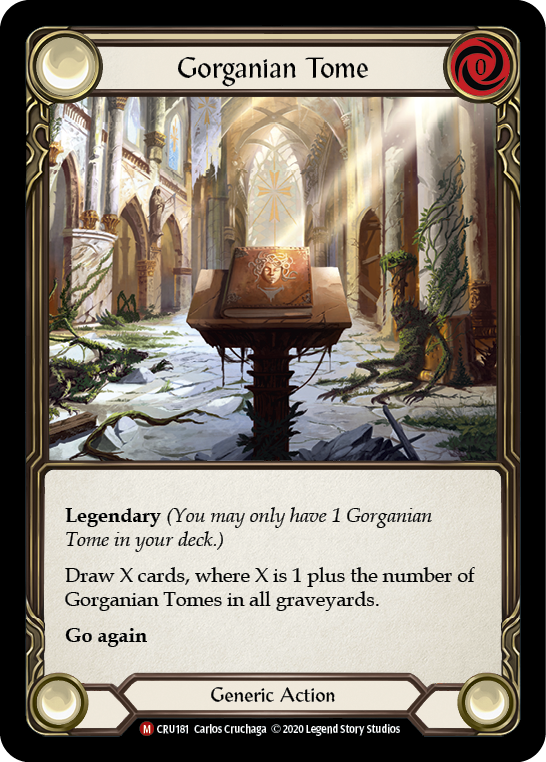
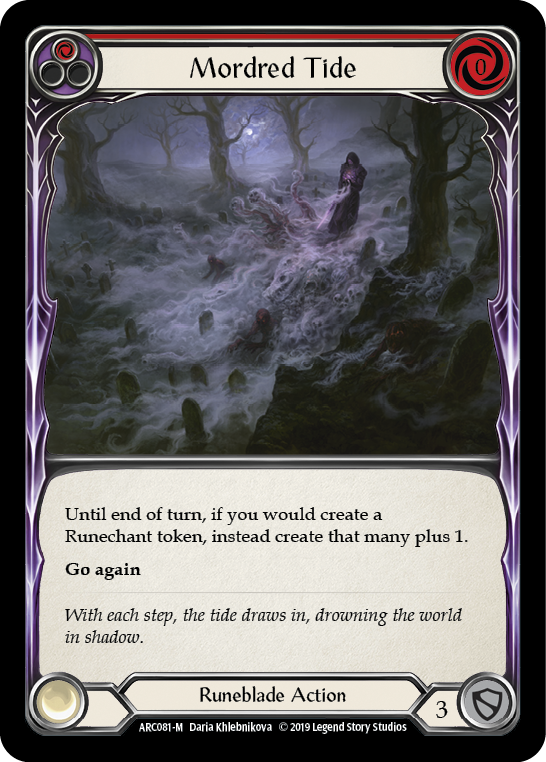
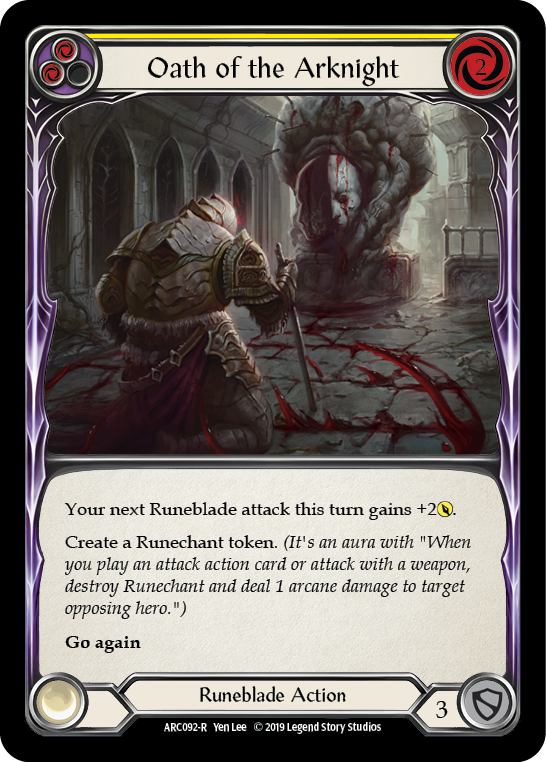
When it comes to producing Runechants, Mordred Tide is in a league of its own. Zero cost with go again, and it can block for 3 when you need it. The only thing it doesn't do is play well on its own!
Rules Tip: If you play Mordred Tide and it triggers Viserai's hero ability, you only get one Runechant since Viserai's trigger resolves before the Mordred Tide.
Which brings us to the easiest way to produce Runechants, which is simply by playing cards that say "Create Runechants". Each of these cards produce respectable amounts of Runechants on their own, but when combined with a Mordred Tide they go into overdrive. Playing Mordred Tide into a Read the Runes sets you up for a free Arknight Ascendancy turn, and Spellblade Assault does almost as much setup work even while getting in for damage of its own!
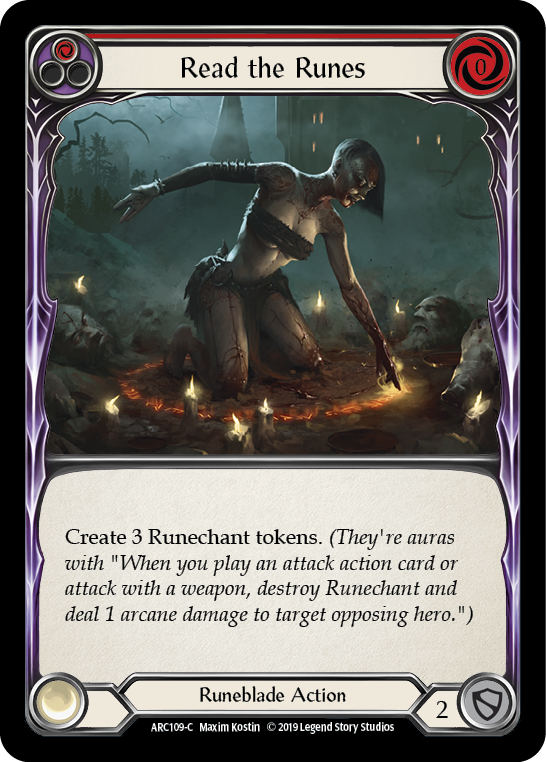
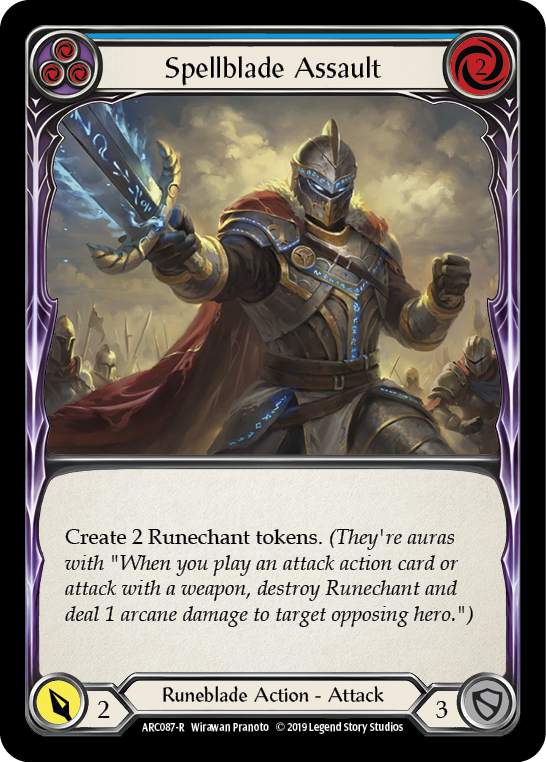
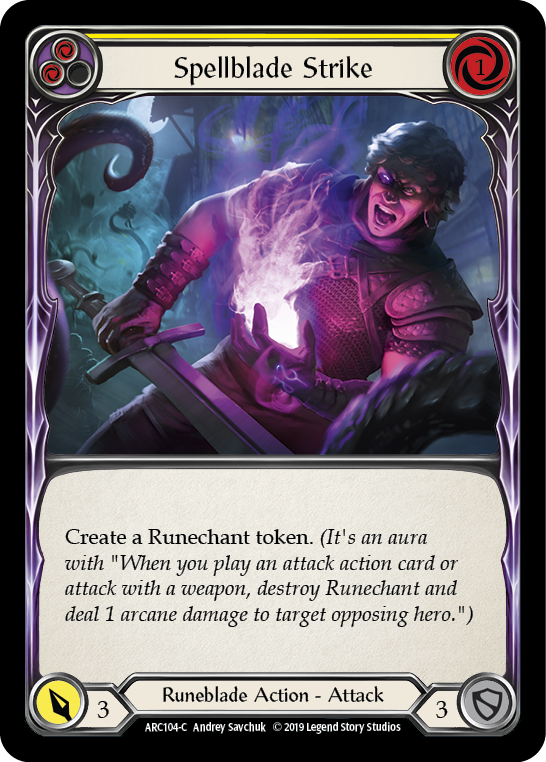
Arknight Armory
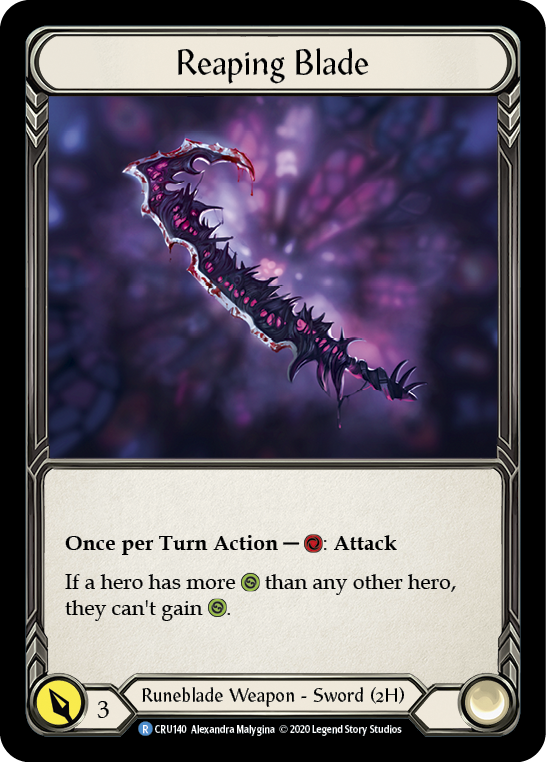
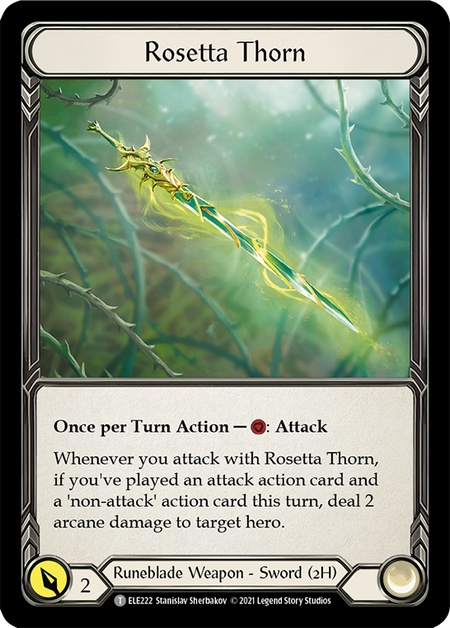
Viserai benefitted greatly from the weapons and equipment from Tales of Aria. Duskblade is so strong it was preemptively banned from Classic Constructed, and soon after that from Blitz too!
Rosetta Thorn gave Viserai more closing power due to it dealing 2 arcane damage as a single source, so it has become the default weapon (despite the flavor fail). Reaping Blade remains a consideration, but is best suited to the slower OTK playstyle.
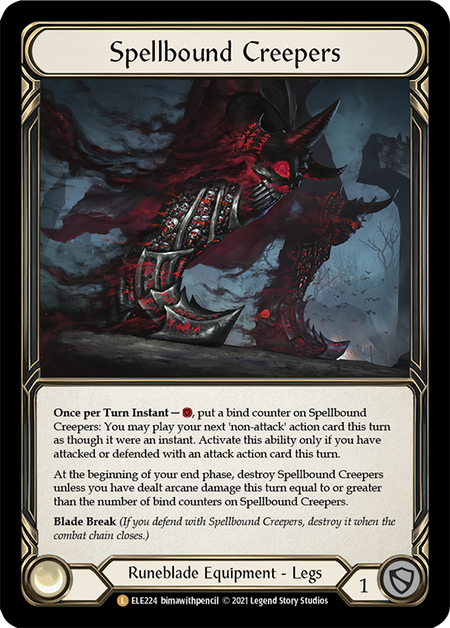
Viserai has some of the best equipment in Flesh and Blood. Spellbound Creepers emulates a multi-use Mage Master Boots, with a fail state of being Ironrot Legs. The generic Arcanite Skullcap is played almost strictly for its defensive stats.
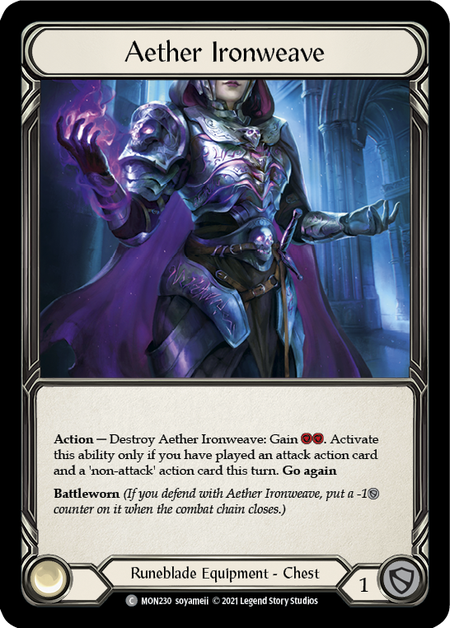
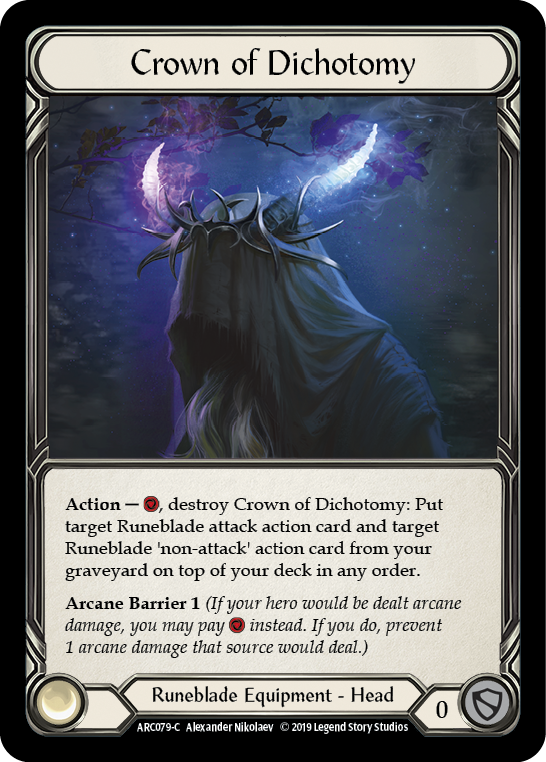
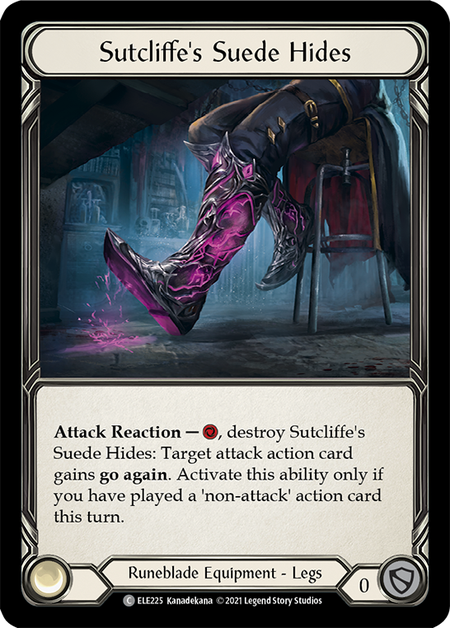
Crown of Dichotomy is the default Arcane Barrier 1 option for Viserai (mostly because Skullcap is normally our least important piece of armor). Aether Ironweave and Sutcliffe's Suede Hides are both great budget-friendly options, with Suede Hides even getting the nod over Spellbound Creepers in aggressive games.
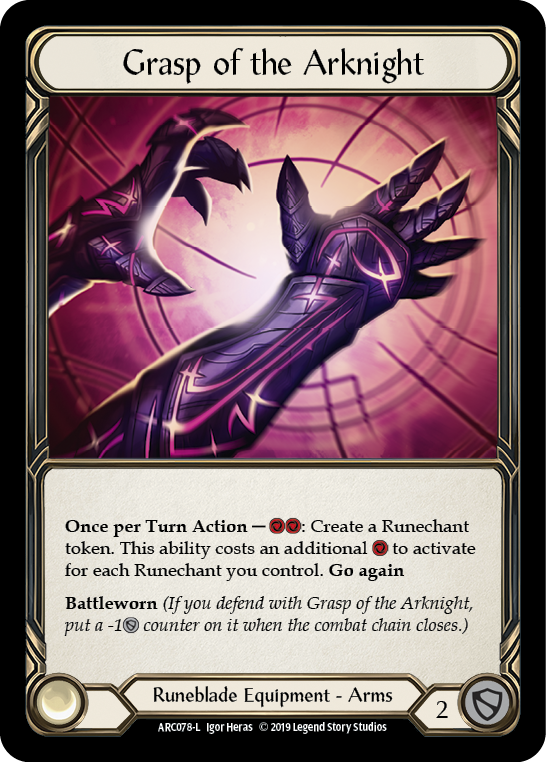
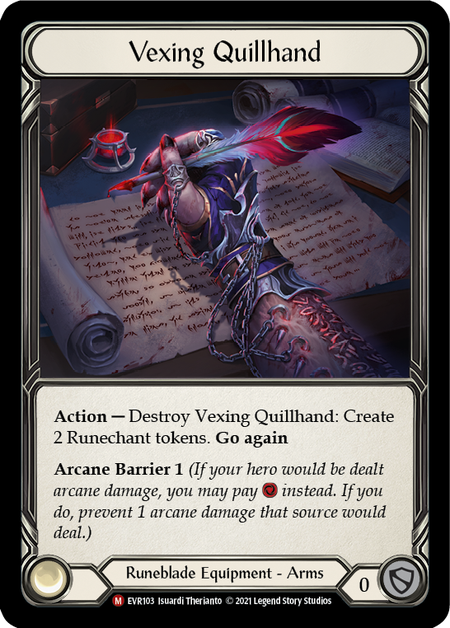
Last but not least, we have our Runeblade Legendary arms, Grasp of the Arknight. While you should always strive to end your turn with Runechants in play, in practice that's not always feasible. That’s where Grasp’s activated ability comes into play. For the cost of 2 resources, Grasp will create a Runechant for us (provided we don't currently have any), which is very important for ensuring cards like Reduce to Runechant are viable plays. The efficiency of Grasp falls off pretty harshly if you already have Runechants in play, but it's still nice to have the option available.
There are games where the quick generation of Runechants and Arcane Barrier 1 make Vexing Quillhand the better choice for the slot, so if you can't afford this legendary you don't need to feel like your settling.
Card Legality
A quick recap on the state of Runeblade's cards in organized play formats:
Classic Constructed
- Bloodsheath Skeleta is suspended until Viserai, Rune Blood becomes Living Legend.
Blitz
- Having attained Living Legend status, Viserai and his signature weapon, Nebula Blade, are no longer legal in Blitz.
- Sonata Arcanix is suspended pending a decision in a future Banned and Suspended announcement.
Getting Started with Viserai
Now that you're familiar with the core aspects of Viserai, here's a decklist that puts these concepts together into a cohesive game plan.
Become the Arknight is a key card for this deck, as it helps with our consistency. It can find Mordred Tide or Read the Runes to give you a big setup turn, or Swarming Gloomveil or Rattle Bones to give you a multiple attack offensive turn. You can play it via Spellbound Creepers after attacking with an attack action to net an Action Point and grab a Revel in Runeblood to follow up with a Rosetta Thorn for 10 damage.
This deck can play out very differently turn to turn. Some turns will be for setup, some for attacking, and occasionally you'll dump your entire hand on defense. This hero/deck/archetype rewards having a good sense of what you should be doing turn to turn, so getting in practice reps is of paramount importance.
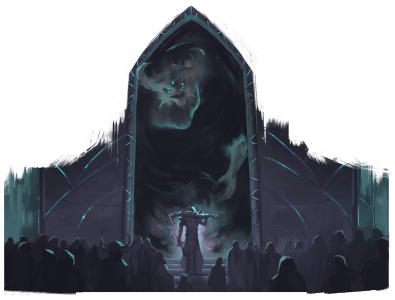
The Demonastery welcomes all, but mastering Viserai and the Runeblade class is a complex and difficult proposition. Some may fall, finding themselves vessels for the Demonastery's many necromancers, but those that rise to the challenge will ascend and join the ranks of the Arknight.


